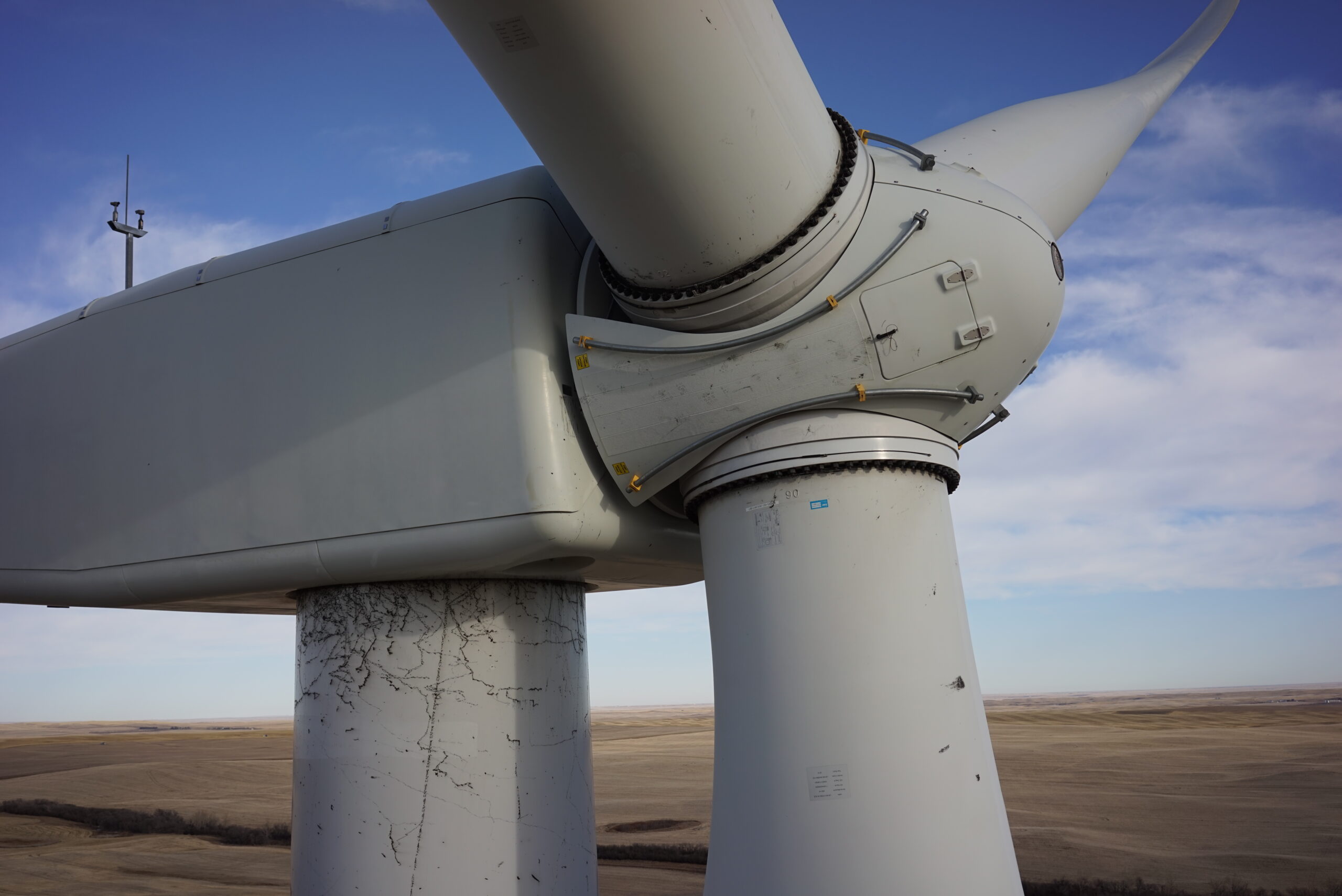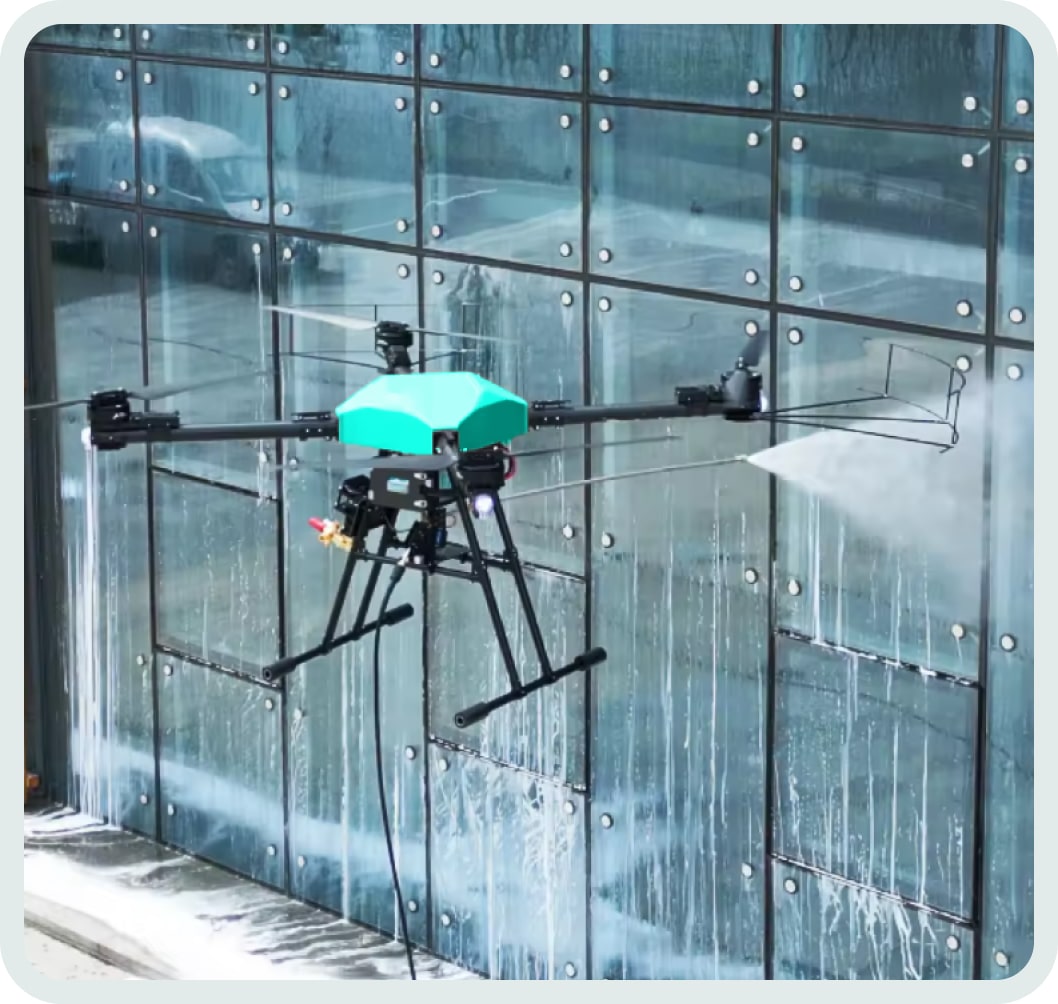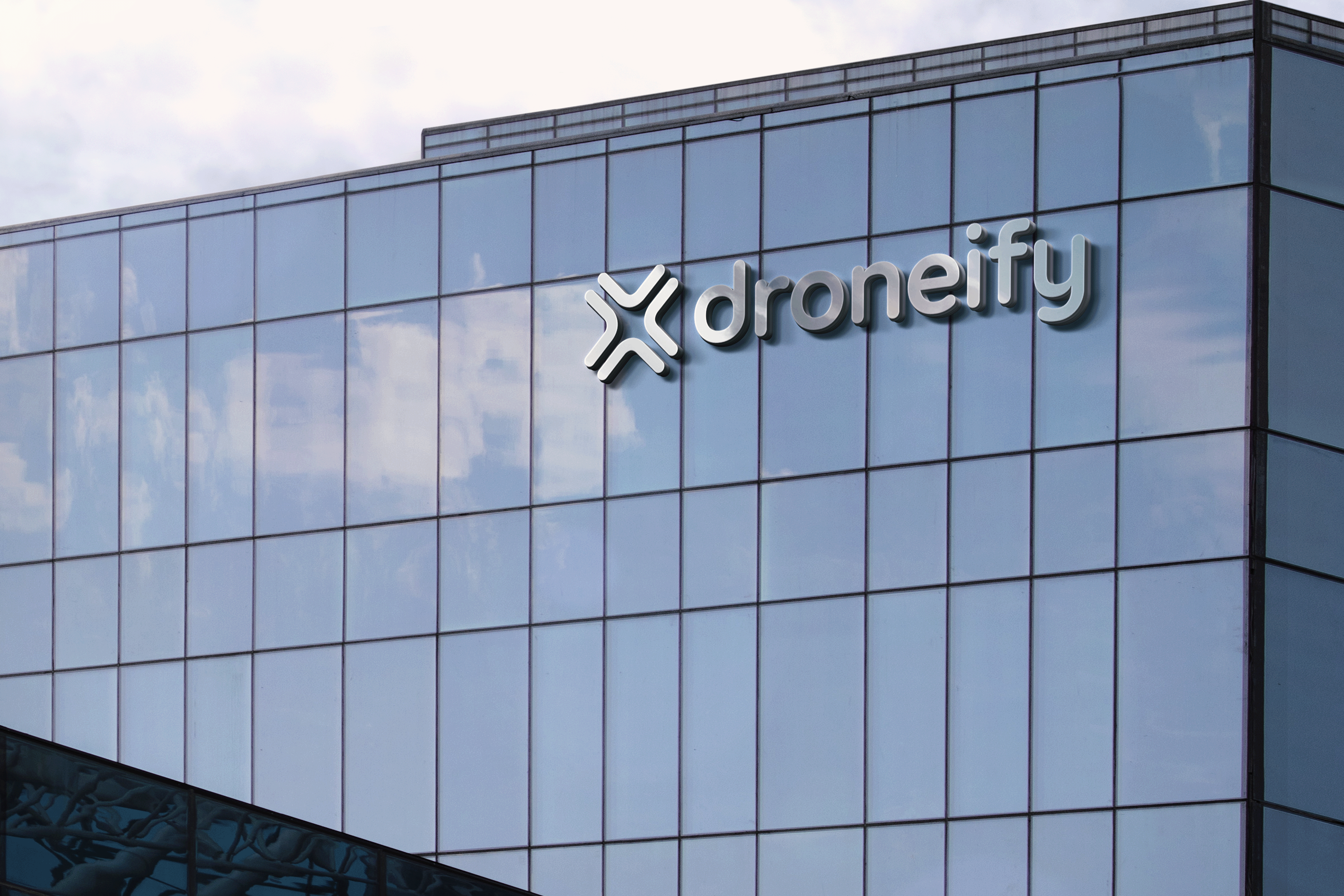While Droneify development continues to be a major focus for the business, as outlined in past updates, we wanted to take a minute to highlight some of the impressive work our Services Division is accomplishing during such a turbulent time for so many businesses. We recently landed a contract with Suncor to inspect wind assets at an Ontario facility, and wanted to share with you some of the leading-edge technology on the hardware and software side that will be deployed for this project. While the below is a fairly in depth outline, as an important part of our company, we hope you may find interest in learning a bit more about how exactly these projects work.
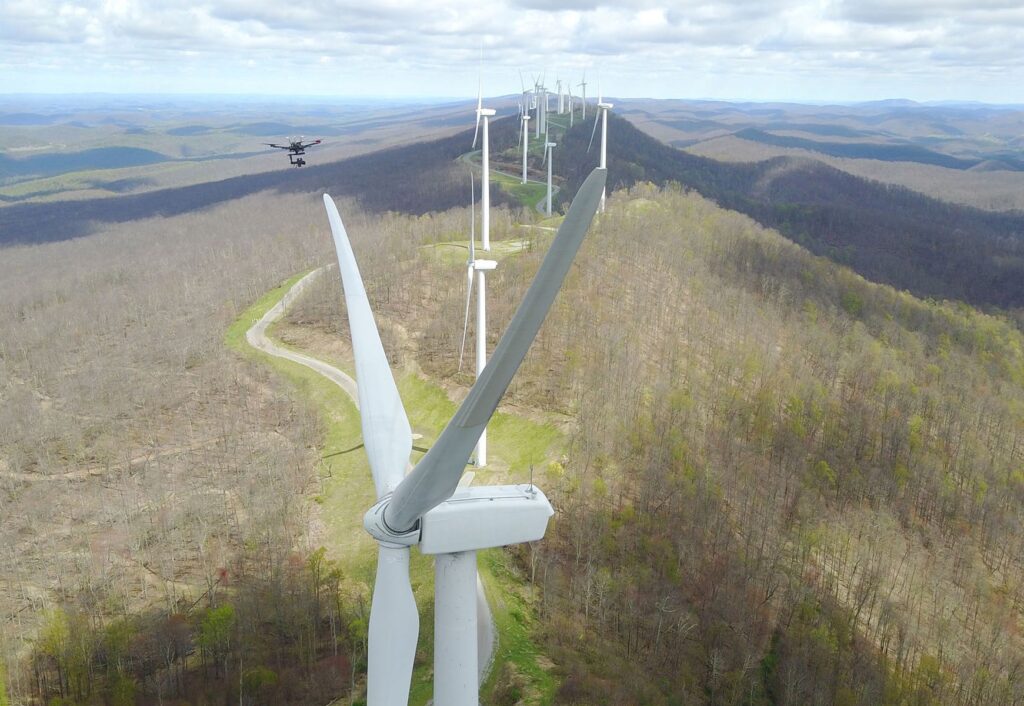
For this particular inspection, our team will be using a DJI M210 with the addition of a LiDAR sensor. Drones equipped with cameras can detect deficiencies in the visual spectrum, but by co-mounting a LiDAR (laser scanner) sensor alongside the camera, we can also get detailed measurements of these defects. Additionally, a customized LiDAR sensor can precisely guide the drone along an autonomous 4-path blade inspection, eliminating drift due to wind conditions and controlling velocity to minimize motion blur.
Before our team executes the job, a specialized flight plan will be built based on a pre-developed 3D model of the turbine. Once loaded in the flight plan, the drone will be able to fully automate the scan. Our pilots will only need to set up the equipment, adjust the camera settings, and click start.
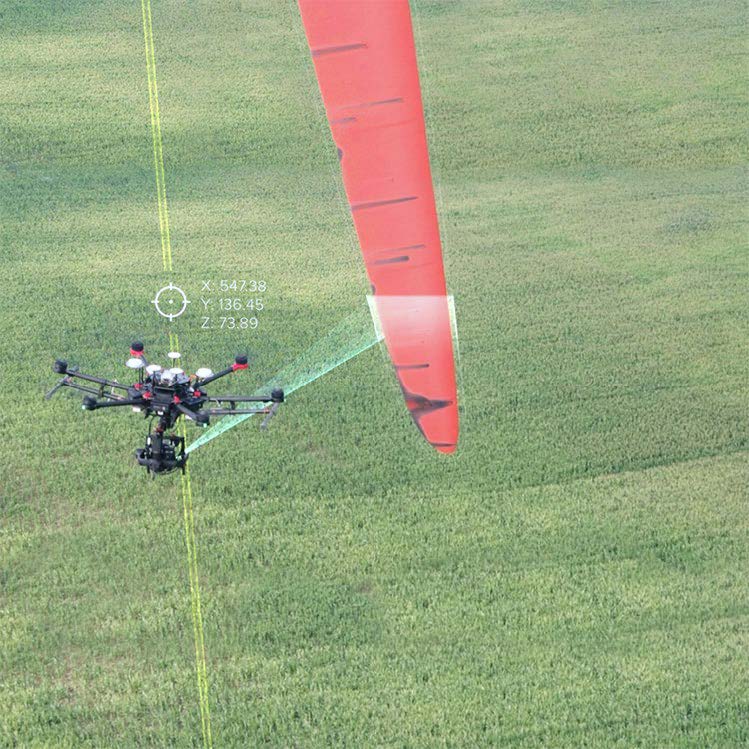
Each inspection will have an area of interest path – leading edge, trailing edge, or side. Each path is composed of the same number of images, and they are placed at the exact same altitude. This creates a virtual walk around the blade and enables cracks located near the trailing edge to be assessed from both sides of the blade.
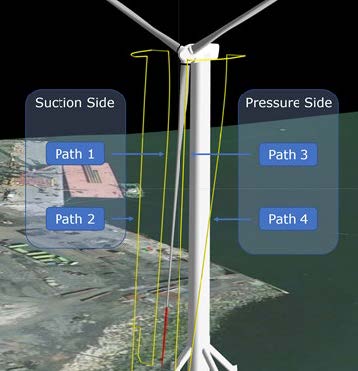
With each turbine inspection having around 300 images, and with wind farms typically having dozens, or even hundreds of turbines, the result is thousands of images for processing and analysis. We, along with our partners, Aerodyne-Measure, will use a 4-step process to ensure that large amounts of raw data are translated into a quality inspection report for the client: Organizing and Sorting, Automated Data Processing, Data Engineer Review, and Blade Expert Review.
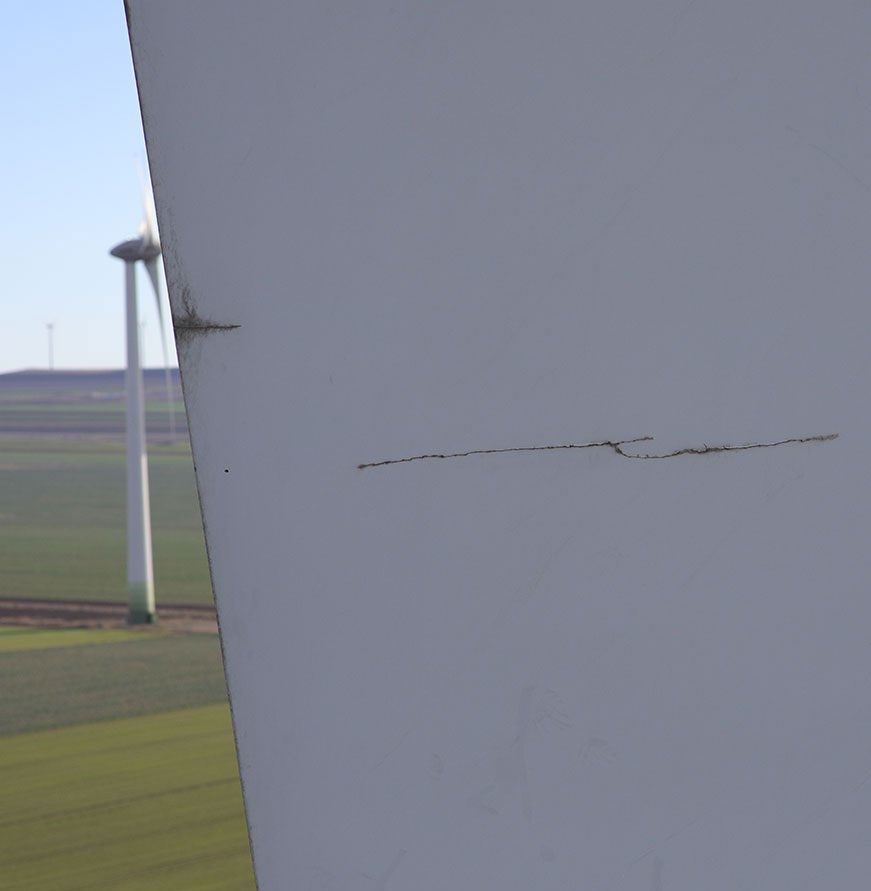
The data will be delivered through an easy-to-use report as well as an online portal that will allow them to view, sort, track, and store inspection results. The report will include:
- All the high-resolution imagery, located to each blade
- All defects classified by type and severity level
- User-friendly report of all defects
- Online portal to store and sort inspection data
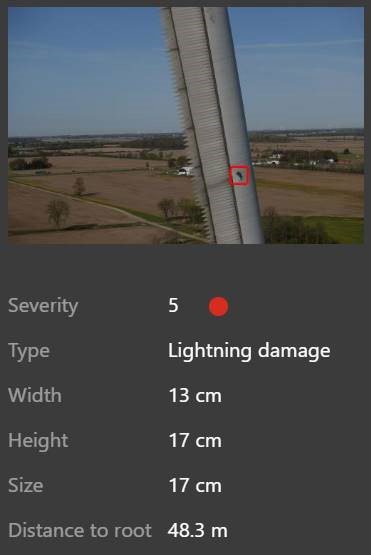
Since we are collecting huge amounts of turbine data over time, from the various inspections we conduct, we can focus on advancements in artificial intelligence (AI) and machine learning (ML) to continually improve our analysis. Our data processing and analysis process was built with Google, and employs Google’s AutoML Vision technology to automatically identify defects and improve the speed of data analysis, meaning we’re able to continuously improve our offering.
While this is perhaps a more detailed breakdown than we usually send, we hope this helps shed some light on the type of work our services team is currently working on, and allows you to better understand what goes in to our service engagements.






